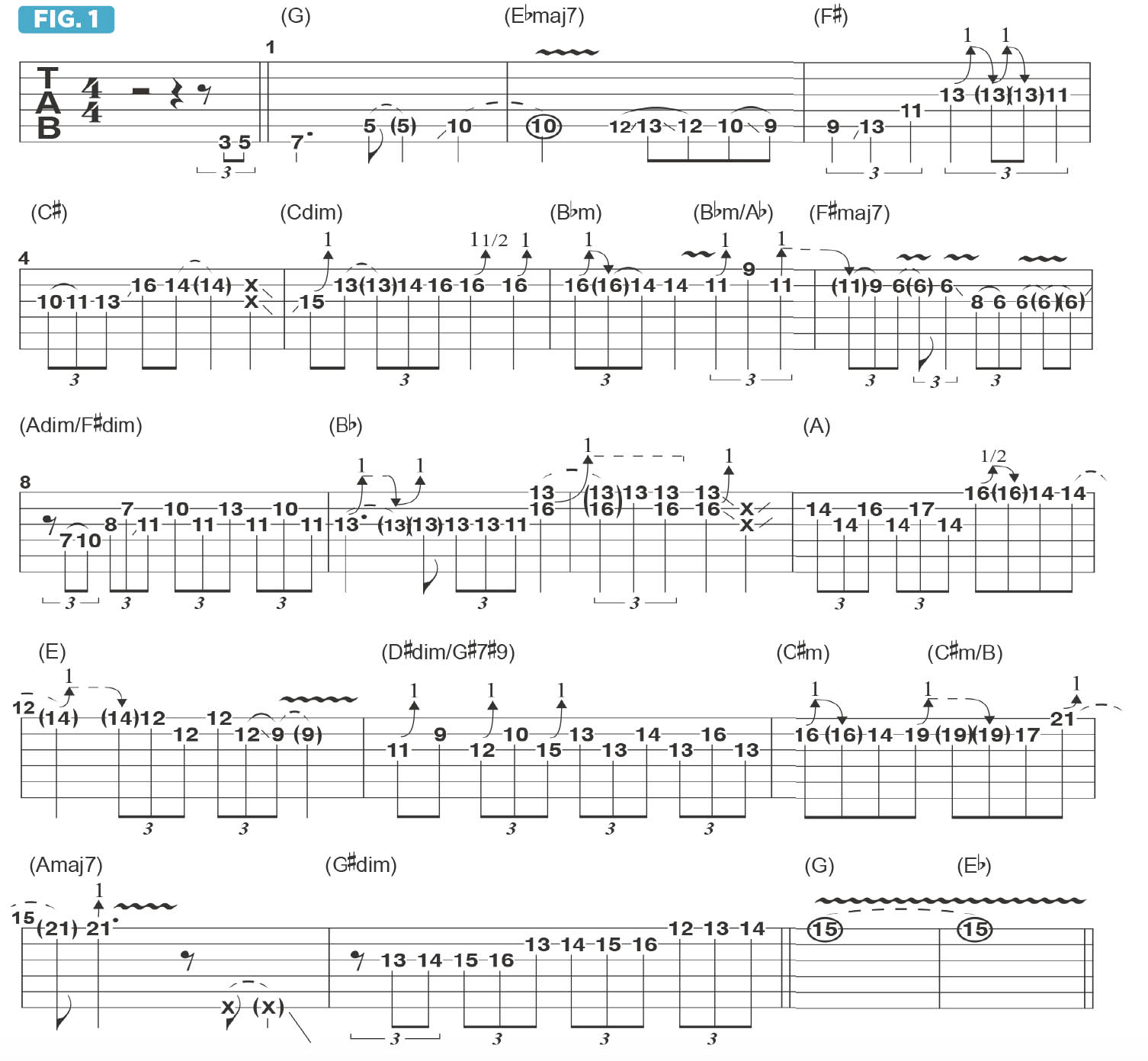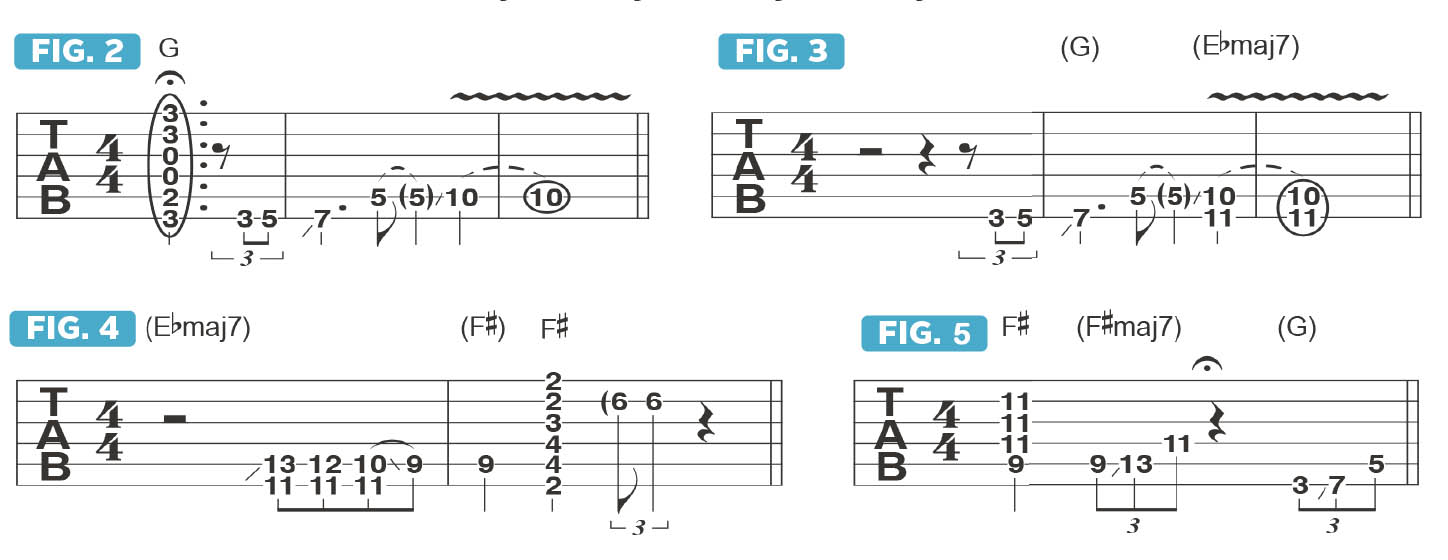The most memorable guitar solos serve as compositions unto themselves. When listening to one, it’s like you’re hearing a song within a song. Examples include George Harrison’s solo in the Beatles’ Something or Eric Clapton’s solo in While My Guitar Gently Weeps. For both of these tracks, you simply can’t imagine the song without the solo being an integral part of it.
One of the bands I record with is the Reddcoats, whose second album, The Reddcoats 2, includes the track All for Me, which is constructed of an intricate and highly unusual chord progression that’s challenging to solo over.
In recording my solo, I initially felt I needed to compose it. I was thinking, “Man, there are so many chord changes, as well as key modulations; I’m going to need to take this home and work on it.” But Mike Medina, the producer, said, “Just take a pass on it and see what happens.” Fortunately, my instincts were good, and within an hour we had a solo we both really liked.
My mindset from the start was that the solo needed to serve as a composition unto itself. I thought, “What can I do with this solo that will tie everything together in the best possible way?”
Figure 1 presents the 16-bar solo, as I recorded it. The first thing I needed to do was memorize the chord progression so that I knew harmonically where it was headed and would be able to anticipate and navigate what I’d be playing over.

The solo begins over a G major chord, and in bar 1, I play the notes of a G major triad – G, B, D, G – in a syncopated rhythm. While sustaining the G note into bar 2, the chord beneath it switches to Ebmaj7. G is a perfect note to play over Ebmaj7, as it is one of the four chord tones or that chord: Eb, G, Bb, D (see Figures 2 and 3).
Here’s a rundown of the progression: G - Ebmaj7 - F# - C# - Cdim - Bbm - Bbm/Ab - Gb - F. The song then modulates up a minor 3rd (one and one half steps) to the key of Eb and follows a similar progression in the new key: Eb - Gbmaj7 - A - E - D#dim - C#m - C#m/B - A - G#dim, which resolves back to G major. As you can see, this is a lot to keep in mind!

Figure 4 highlights the brief melodic line I play over the second chord in the progression, Ebmaj7, with the Eb included underneath; when G, the major 3rd, is restated, I simply slide down one fret to F#, the tonic of the next chord in the progression. As shown in Figure 5, I approached the F# chord in the same way as I had approached the G chord, by playing the notes of an F# major triad: F#, A#, C#.
As you study the remainder of the solo, you’ll see that each melodic phrase “describes” the chord over which it's played. Take your time with this solo, and pay attention to how each melodic phrase sets up the arrival of the next chord.
This will be the last installment of Melodic Muse for the time being. I’d like to thank everyone who has been following these columns over the last couple of years. I’ll be back with more columns soon. In the meantime, hope to see you out on the road!







